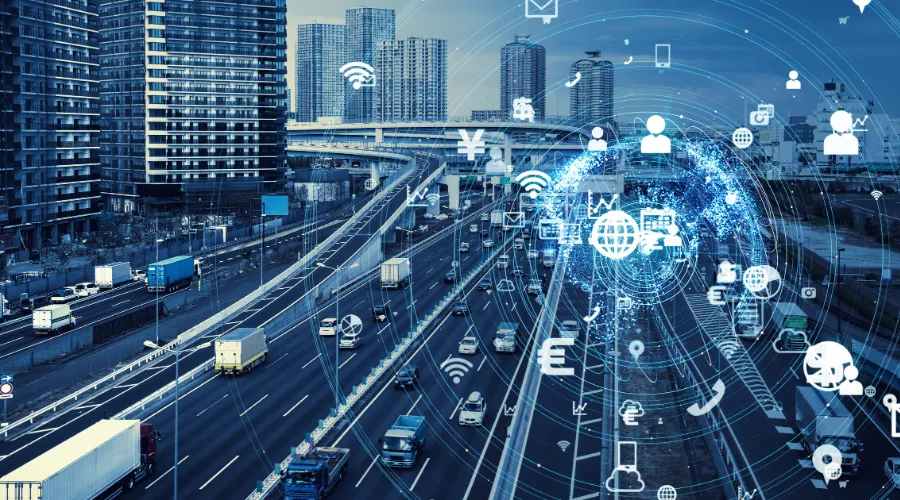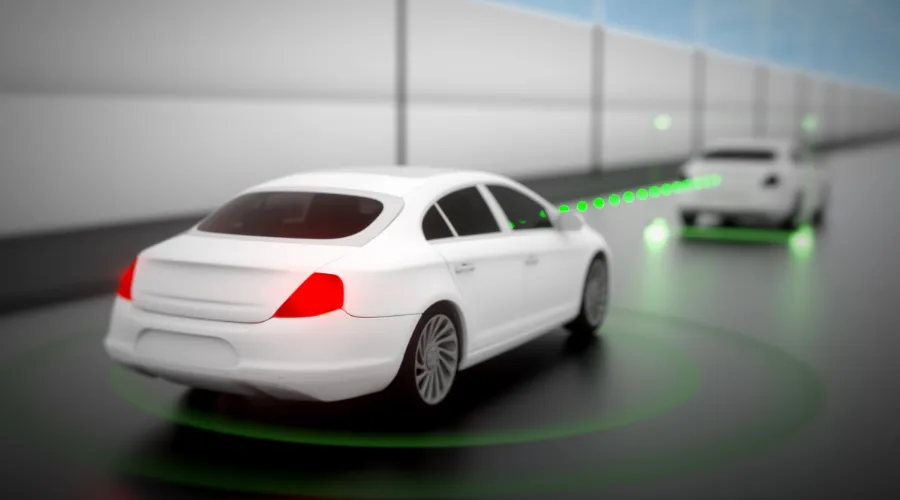Cars with Artificial Intelligence: What to Expect in the Future?

Anúncios
The automotive industry is undergoing a seismic shift, and at the heart of this transformation are cars with artificial intelligence.
These vehicles are no longer just a futuristic concept; they are rapidly becoming a reality, reshaping how we think about transportation, safety, and convenience.
From self-driving capabilities to personalized in-car experiences, AI is revolutionizing the way we interact with our vehicles.
Anúncios
But what does the future hold for these intelligent machines?
Let’s explore the possibilities, challenges, and innovations that lie ahead.
The Evolution of AI in Automotive Technology
The integration of artificial intelligence into cars has been a gradual process, but recent advancements have accelerated its adoption.
Early iterations of AI in vehicles focused on basic tasks like navigation and voice recognition.
Today, cars with artificial intelligence are equipped with sophisticated systems that can process vast amounts of data in real-time, enabling features like autonomous driving, predictive maintenance, and advanced driver-assistance systems (ADAS).
According to a report by McKinsey & Company, the global market for AI in automotive applications is expected to grow at a compound annual growth rate (CAGR) of 40% through 2025.
This growth is driven by increasing consumer demand for safer, more efficient, and connected vehicles.
As AI continues to evolve, its applications in the automotive sector will only become more diverse and impactful.
Moreover, the rise of connected cars has opened up new avenues for AI integration, allowing vehicles to communicate with each other and infrastructure.
This connectivity enhances safety and efficiency by enabling real-time traffic updates and coordinated driving strategies.
+ Self-Driving Cars: Has the Future of Mobility Arrived?
Autonomous Driving: The Holy Grail of AI-Powered Cars
One of the most talked-about applications of AI in cars is autonomous driving.
Companies like Tesla, Waymo, and General Motors are leading the charge, developing vehicles that can navigate complex environments with little to no human intervention.
These cars with artificial intelligence rely on a combination of sensors, cameras, radar, and machine learning algorithms to perceive their surroundings and make split-second decisions.
However, achieving full autonomy is no small feat.
While Level 2 and Level 3 autonomous systems are already on the market, Level 4 and Level 5 systems—which require no human intervention—are still in the testing phase.
Challenges such as regulatory hurdles, ethical considerations, and technological limitations must be addressed before fully autonomous vehicles become mainstream.
As the technology matures, public perception and acceptance will also play a crucial role in the widespread adoption of autonomous vehicles.
Education and transparency about how these systems work will be essential to alleviate concerns and build trust among consumers.
Personalized In-Car Experiences
Beyond autonomy, AI is transforming the in-car experience.
Modern vehicles are becoming more like personal assistants, capable of learning driver preferences and adapting to individual needs.
For instance, AI-powered infotainment systems can recommend music, adjust climate controls, and even suggest optimal routes based on traffic conditions.
Moreover, natural language processing (NLP) allows drivers to interact with their vehicles using voice commands, making the driving experience more intuitive and less distracting.
As AI continues to advance, we can expect even more personalized features, such as mood-based lighting, health monitoring, and real-time language translation.
These enhancements not only improve comfort but also contribute to a safer driving experience by minimizing distractions.
In the future, we might see vehicles that can analyze a driver’s emotional state and adjust the environment accordingly, creating a more pleasant journey.

Enhancing Safety with AI
Safety has always been a top priority in the automotive industry, and AI is playing a crucial role in making vehicles safer than ever before.
Advanced driver-assistance systems (ADAS) powered by AI can detect potential hazards, alert drivers, and even take corrective actions to prevent accidents.
For example, AI algorithms can analyze data from cameras and sensors to identify pedestrians, cyclists, and other vehicles, reducing the risk of collisions.
Additionally, predictive maintenance systems use AI to monitor vehicle health and alert drivers to potential issues before they become serious problems.
These safety features not only protect drivers and passengers but also contribute to overall road safety.
As AI technology continues to evolve, we can expect even more sophisticated safety systems that can predict and prevent accidents before they occur.
The integration of AI with vehicle-to-vehicle (V2V) communication can further enhance safety by allowing cars to share information about potential hazards in real-time.
++ Hybrid Technology: How It Works and Its Advantages
The Environmental Impact of AI-Powered Cars
As the world grapples with climate change, the automotive industry is under pressure to reduce its environmental footprint.
Cars with artificial intelligence are contributing to this effort by optimizing fuel efficiency and supporting the transition to electric vehicles (EVs).
AI can analyze driving patterns and traffic conditions to minimize fuel consumption, while also managing battery life in EVs to extend their range.
Furthermore, autonomous vehicles have the potential to reduce traffic congestion and emissions by optimizing routes and driving behaviors.
By using AI to streamline traffic flow, cities can significantly lower their carbon emissions, contributing to a healthier environment.
As more consumers adopt EVs and hybrids, AI will play a critical role in managing charging infrastructure and energy distribution, ensuring a sustainable future for transportation.
For more insights into the environmental benefits of AI in transportation, check out this article.
Challenges and Ethical Considerations
Despite the many benefits of AI in cars, there are significant challenges and ethical considerations that must be addressed.
One major concern is data privacy.
AI systems rely on vast amounts of data to function effectively, raising questions about how this data is collected, stored, and used.
Another issue is the potential for job displacement.
As autonomous vehicles become more prevalent, there is a risk that jobs in industries like trucking and ride-sharing could be affected.
Policymakers and industry leaders must work together to ensure that the transition to AI-powered transportation is equitable and inclusive.
Additionally, ethical dilemmas surrounding decision-making in critical situations must be carefully considered.
For instance, how should an autonomous vehicle prioritize the safety of its passengers versus pedestrians in the event of an unavoidable accident?

The Road Ahead: What to Expect in the Next Decade
The future of cars with artificial intelligence is incredibly promising, but it is also fraught with uncertainty.
Over the next decade, we can expect to see continued advancements in autonomous driving, in-car personalization, and safety features.
At the same time, the industry will need to navigate complex regulatory landscapes and address ethical concerns.
One thing is certain: AI is here to stay, and its impact on the automotive industry will be profound.
As consumers, we must stay informed and engaged, ensuring that the benefits of this technology are realized while minimizing its risks.
Collaboration between tech companies, automakers, and regulatory bodies will be essential to foster innovation while maintaining safety and ethical standards.
The next decade will be crucial in defining how AI shapes the future of transportation, and it will require a collective effort from all stakeholders involved.
Tables: Key Trends and Statistics
Table 1: Growth of AI in the Automotive Industry
| Year | Market Size (USD Billion) | Key Drivers |
|---|---|---|
| 2020 | 2.5 | ADAS, Infotainment |
| 2025 | 12.0 (Projected) | Autonomous Driving, EVs |
| 2030 | 30.0 (Projected) | Full Autonomy, AI Personalization |
Table 2: Levels of Autonomous Driving
| Level | Description | Example |
|---|---|---|
| 0 | No Automation | Traditional Cars |
| 1 | Driver Assistance | Adaptive Cruise Control |
| 2 | Partial Automation | Tesla Autopilot |
| 3 | Conditional Automation | Audi Traffic Jam Pilot |
| 4 | High Automation | Waymo One |
| 5 | Full Automation | Fully Autonomous Vehicles |
Conclusion
The rise of cars with artificial intelligence marks a new era in transportation, one defined by innovation, efficiency, and connectivity.
While challenges remain, the potential benefits of this technology are too significant to ignore.
As we look to the future, it is clear that AI will continue to shape the automotive industry in ways we can only begin to imagine.
Whether you’re a tech enthusiast or a casual driver, the journey ahead promises to be nothing short of extraordinary.
